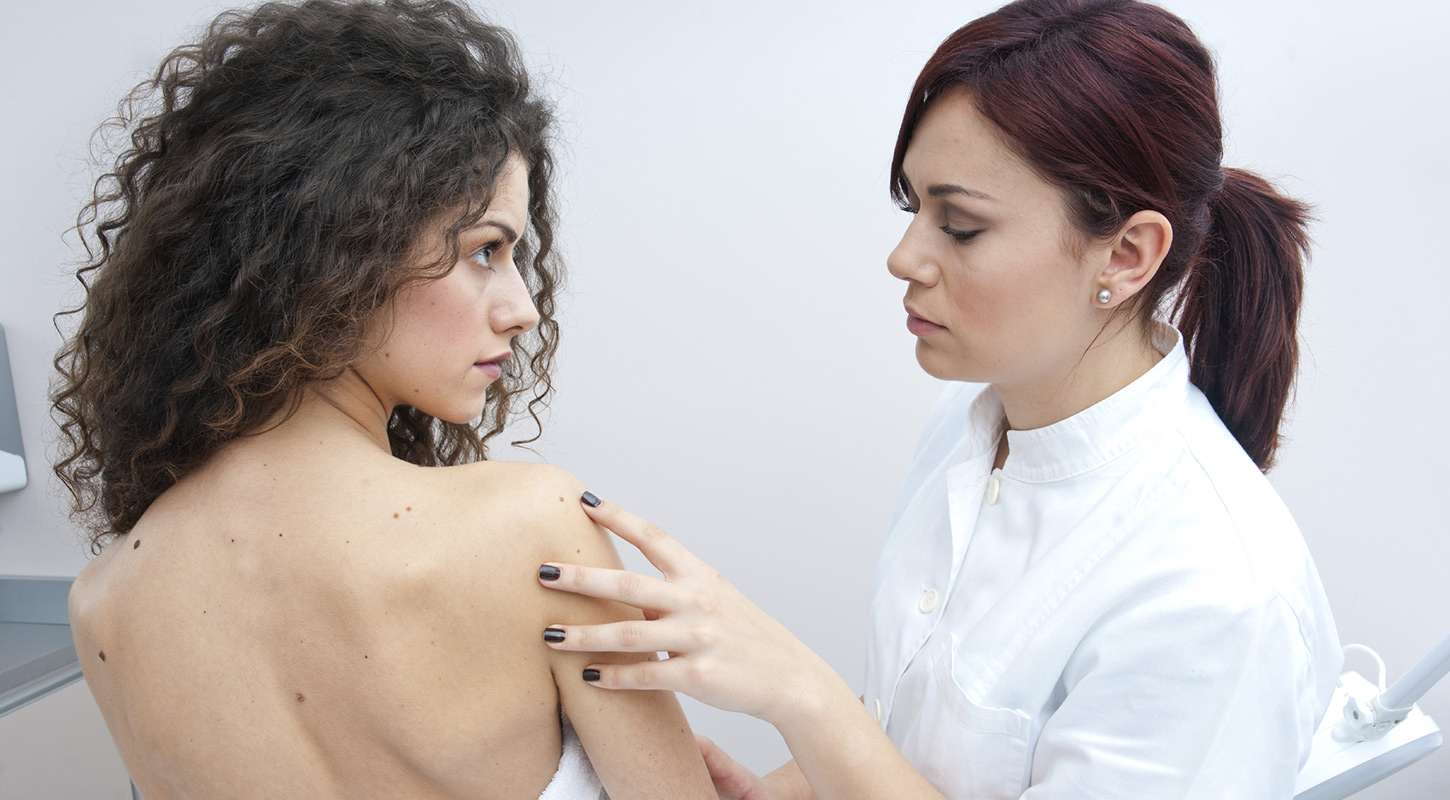Early Detection of Melanoma: Signs, Symptoms, & Self-Exams

As with other cancers, detecting malignant melanoma early provides the best chance for successful treatment. Knowing how to recognize the symptoms, as well as how to conduct a self-exam at home, can give you the best chance of discovering any signs before the cancer has spread. This is especially important for people who are at a high-risk of skin cancer or have already been treated for this disease.
How Do I Perform a Self-Exam?
Familiarizing yourself with how skin cancers look and how your skin appears normally is the key when performing a self-exam. Every few months, use a full-length mirror to examine all of your skin. For smaller areas like your hands, scalp, nose, mouth, soles, genitals, ears, and between the buttocks, use a hand mirror to get a closer look. Give special attention to moles or areas of previous skin cancer. If you notice any changes or suspicious growths, set an appointment to have it examined by your dermatologist right away.
What Do I Look For?
There are several general warning signs of sign cancer, including changes in size, color, shape, or texture of a mole. Another sign is an open or inflamed skin wound that won’t heal. Melanoma, which is the most dangerous type of skin cancer, may show itself as:
- A change in an existing mole
- A group of shiny, firm, dark bumps
- A mole that is larger than the size of a pencil eraser
- A small, dark, multicolored spot that is elevated or flat with irregular borders that may bleed or scab
Remember that some melanomas may not fit into this description. It is important to be aware of other warning signs as well, including:
- A sore that doesn’t heal
- Redness or new swelling beyond the border of the mole
- Pigment spreading from the border of a spot into the skin surrounding it
- A mole that becomes itchy, painful, or tender
- Scaling, oozing, bleeding, or the appearance of a bump in surface of a mole
If you notice any changes on your skin, new spots, or growths that look different from moles you already have, speak with your doctor right away. Visit our skin cancer page to find out more about how it is treated and what you can do to prevent it.
